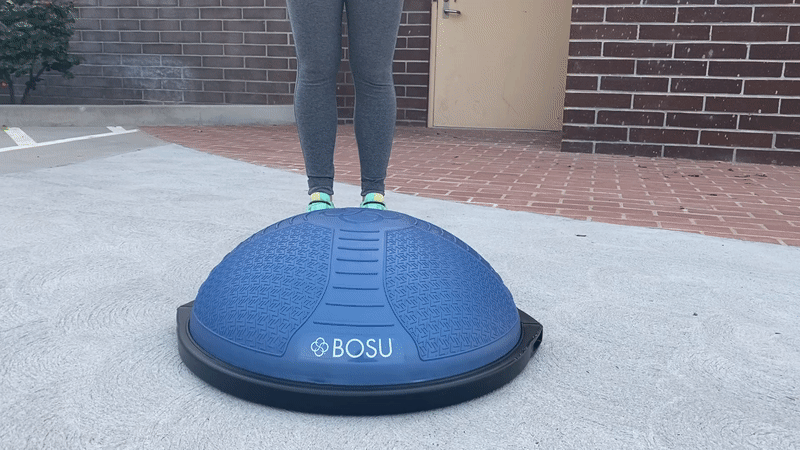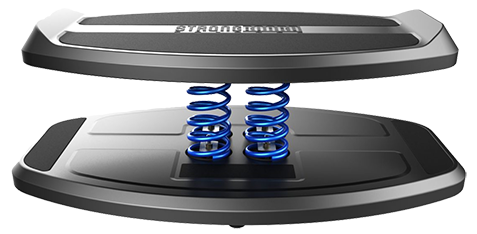
StrongBoard Balance vs. Bosu Ball: The Differences
Unlike air-filled domes, rocker/rollers, and wobble boards, StrongBoard Balance and StrongBoard MINI employ patented MULTI SPRING TECHNOLOGY™. From beginner balance board exercise, to advanced yoga workouts, StrongBoard Balance has you covered. See how to compares to Bosu Ball.
Getting On and Off: StrongBoard Balance vs. Bosu
STRONGBOARD BALANCE® – The platform’s level surface makes getting on and off safe and easy. Each unit comes with an instructional card, and there is an introduction video accessible on the education tab.

BOSU® – When using BOSU® balance ball upside down (turning it into a BOSU® balance board,
which the manufacturer warns against), the round belly and pliable air make it very difficult to control which direction and degree the platform will tilt, creating risk to the user.
When using BOSU® ball right side up, user’s feet (or hands) sink into the bubble and can over-supinate around the round dome shape, creating strain on ankle, wrist, knee, elbow, shoulder and hip joints.
Stabilization: StrongBoard Balance vs. Bosu
STRONGBOARD BALANCE® – One can think of StrongBoard balance board as a 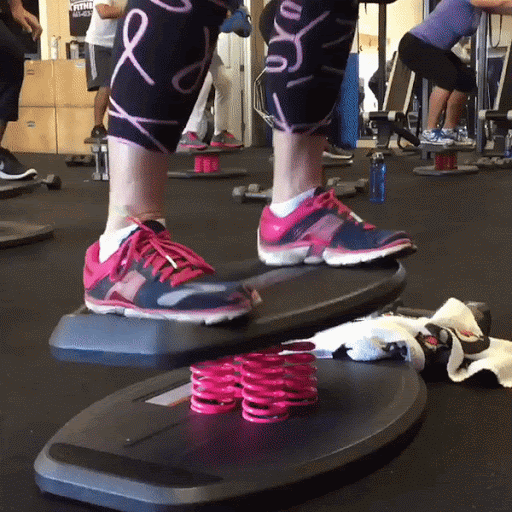 multidirectional teeter totter, creating movement in all three planes of direction. The springs act as the fulcrum – where load and effort are continually combating one another in attempts to find balance.
multidirectional teeter totter, creating movement in all three planes of direction. The springs act as the fulcrum – where load and effort are continually combating one another in attempts to find balance.
This instability creates a number of involuntary muscle contractions not only in the primary movers, but also in the smaller stabilizing muscles. Standing erect or arms fully locked allows for more stabilization due to less force being required by the muscles and joints to stabilize.
BOSU® – It is possible to stabilize on BOSU® ball as it employs air which is pliable, transferable and can be manipulated by applied weight. When a user finds stabilization (or flat spot) involuntary muscle contraction is significantly decreased and a user is not forced to stay engaged.
Range of Motion: StrongBoard Balance vs. Bosu
STRONGBOARD BALANCE® – StrongBoard MINI®’s 4″ springs andStrongBoard Balance’s 6″ springs allow for a maximum range of motion in all three planes of motion during full body exercises. This full range of motion offered by StrongBoard is referred to as Unlimited Dynamic Articulation™ (UDA), as a user is able to hit 360 degrees around the fulcrum, in every angle.
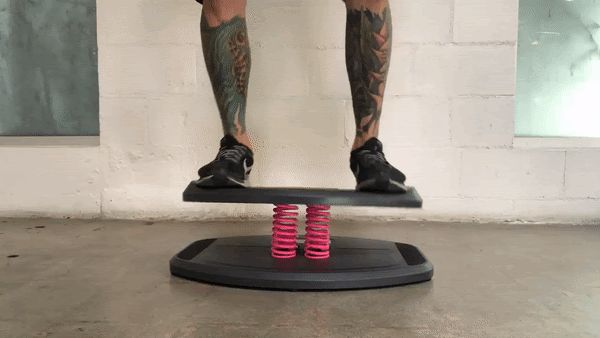
BOSU® – Bosu® ball offers a limited range of motion depending on the amount of air inside the inflatable ball (less air – means it’s more pliable and increases the surface contact of the feet and hands), the weight of the user, and the competing degree of supination.
Exercises: StrongBoard Balance vs. Bosu
STRONGBOARD BALANCE® – Provides a flat/level, industrial grade platform 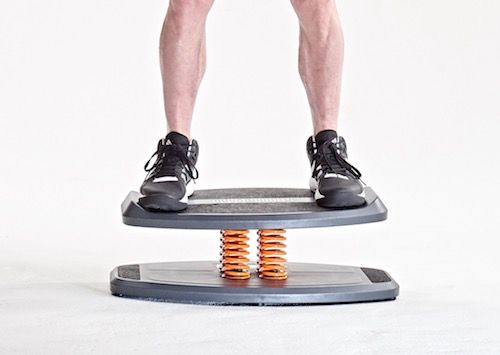 for exercises in both standing and plank positions, which supports the kinetic chain and mimics most real life movements and surfaces. See the free library of exercise guides here.
for exercises in both standing and plank positions, which supports the kinetic chain and mimics most real life movements and surfaces. See the free library of exercise guides here.
BOSU® – For standing exercises, Bosu® ball has a round, soft dome, 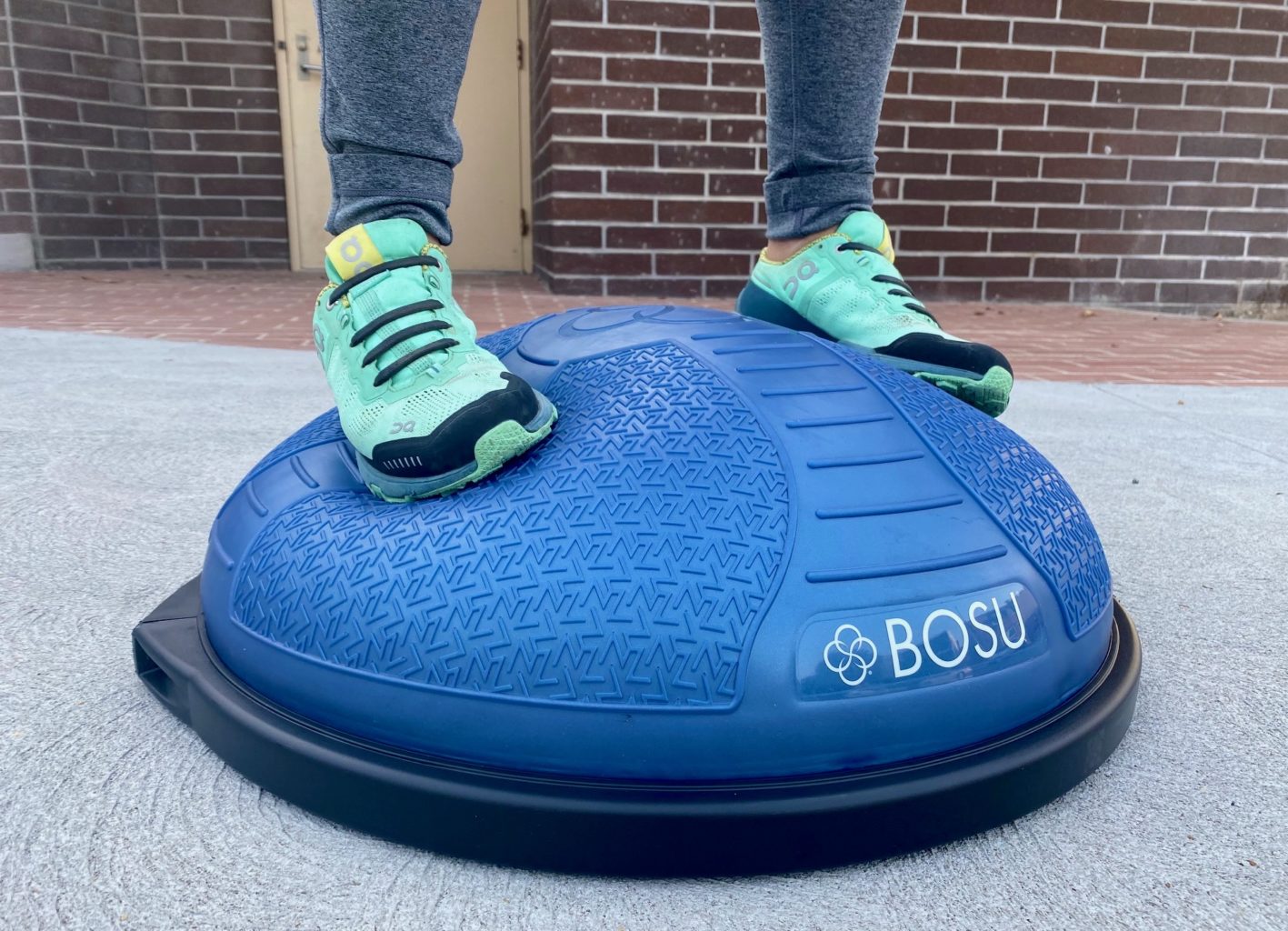 which causes a user’s ankles to excessively supinate and the knees and hips to externally rotate, which can create strain in the ligaments and joints.
which causes a user’s ankles to excessively supinate and the knees and hips to externally rotate, which can create strain in the ligaments and joints.
Instability Variance: StrongBoard Balance vs. Bosu
STRONGBOARD BALANCE® – Because StrongBoard balance board is a first class lever system (think of a see-saw), and its springs serve as a fulcrum, greater instability may occur the further away the feet or hands are placed from the center of the board (think of a teeter totter). This instability allows for a greater activation of the supporting/stabilizing musculature, creating involuntary muscle contractions and increased core engagement.
As StrongBoard’s function is wholly supported, a user can consciously choose a wider stance/hand position & increased joint angle for increased instability, or a closer stance/hand position & decreased joint angle for increased stability.

BOSU®: Instability varies depending on several factors – user’s weight and the amount of air within. When properly inflated – and the feet are placed closer to the center of the dome there is considerably more stability due to the top of the dome having less angle. However, if overinflated and the feet are placed further away from the center of the dome, the ankles tend to over supinate, causing the knees and hips to externally rotate.
Without knowing the formula for position with variances in the amount of air or PSI calibration, it is virtually impossible for a user to consciously choose their desired activation by determined position on a Bosu ball.
Customization: StrongBoard Balance vs. Bosu
STRONGBOARD BALANCE® – StrongBoard Balance Board wants its users to customize their board to match their unique personality, facility, company, school, or team. StrongBoard keeps 10 popular colors in stock: Red, White, Blue, Black, Orange, Yellow, Pink, Purple, Turquoise and Green.
This allows for immediate custom configurations of inventoried items such as 2 black springs, and two yellow springs, or 1 spring each in 4 different colors. StrongBoard also allows users to order custom color springs (any color on the spectrum not inventoried) for a premium price.
BOSU® – Bosu® ball is available in six colors, offering no customization.
Weight Limit / Durability: StrongBoard Balance vs. Bosu
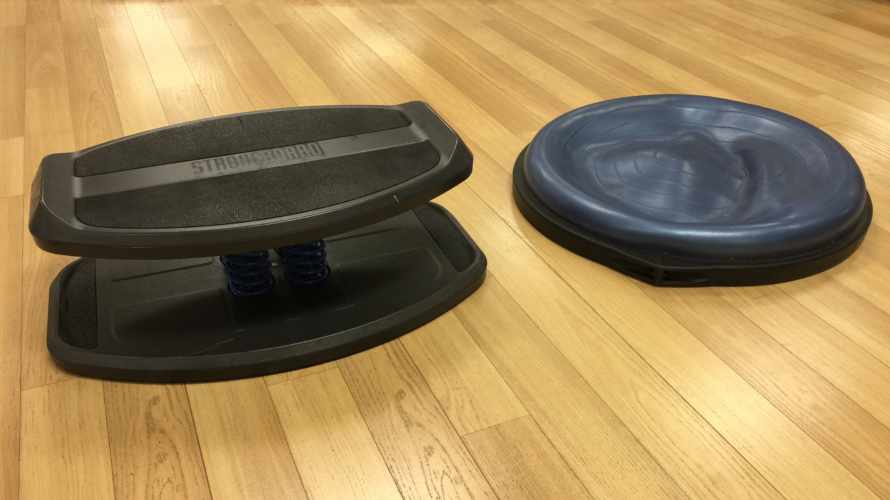
STRONGBOARD BALANCE®– StrongBoard Balance is approved for 500 pounds. It is able to accommodate weight routines and impact during workouts.
BOSU® – BOSU® is approved for 350 pounds. It is not recommended to use heavy weights or bounce on a Bosu ball.
Warranty: StrongBoard Balance vs. Bosu
STRONGBOARD BALANCE® – StrongBoard Balance offers a 3-year manufacturer’s warranty for home or commercial use on ALL of its products and is proudly manufactured and distributed in the USA.
BOSU® – Most BOSU ball products employ a 90 day limited warranty for home usage ONLY! Warranty is void if used in a commercial setting such as a gym or fitness center. The PRO Balance Trainer offers 1 year limited warranty for commercial and home usage.
